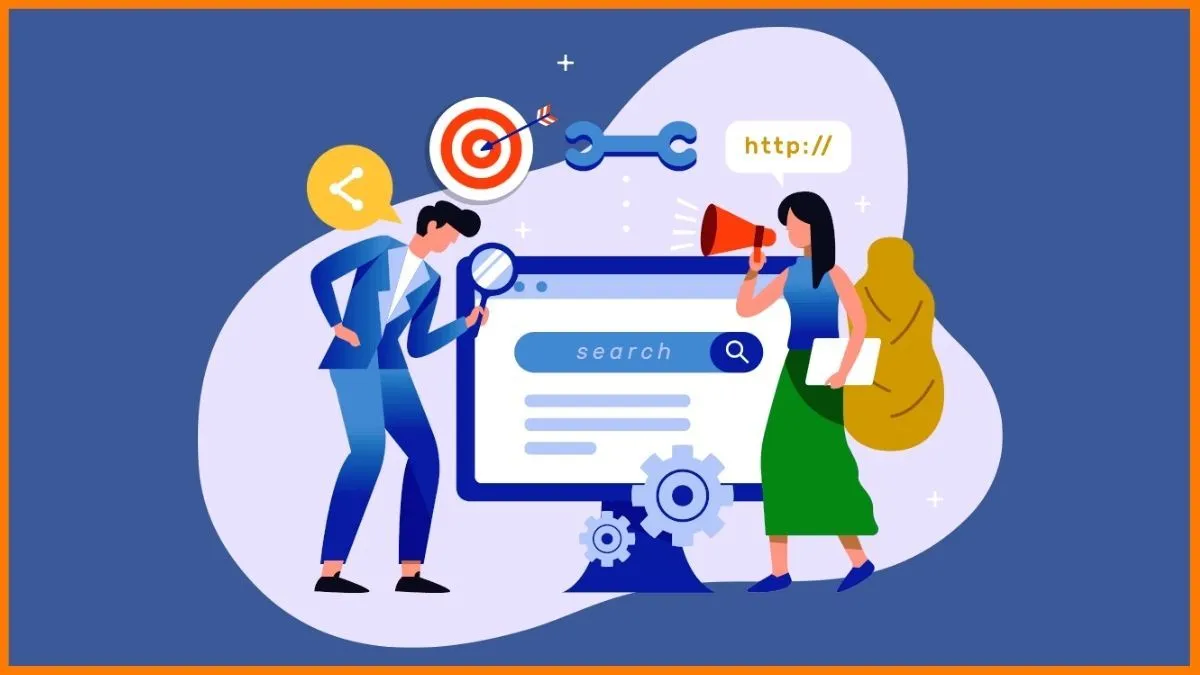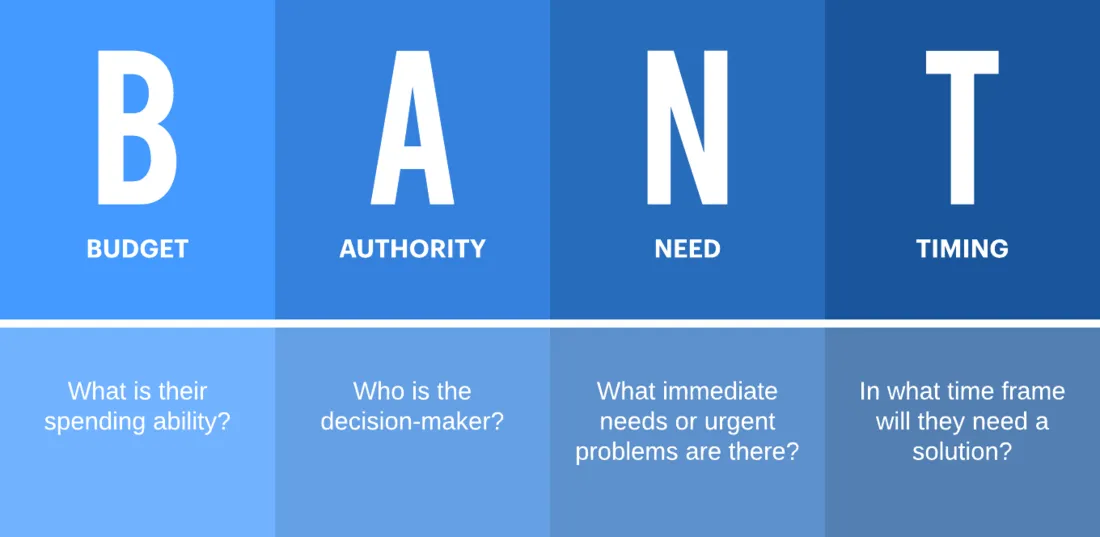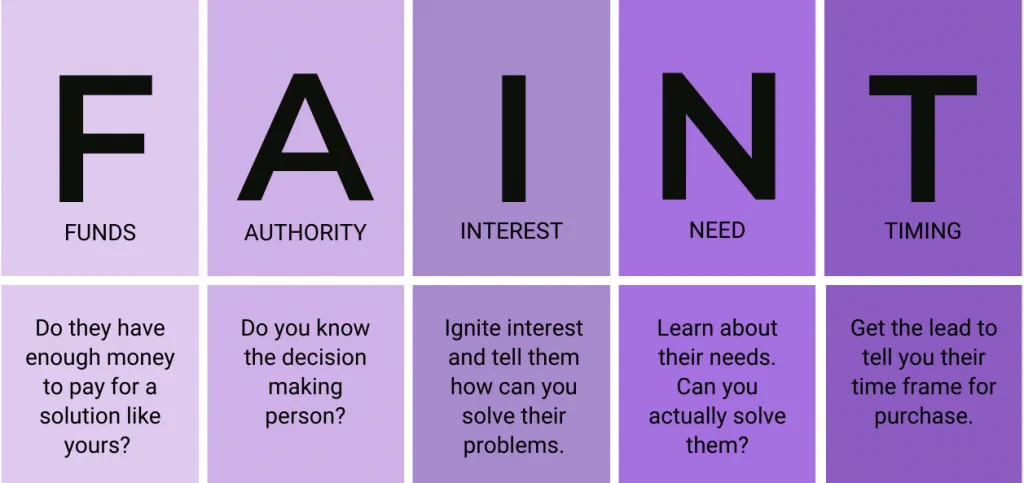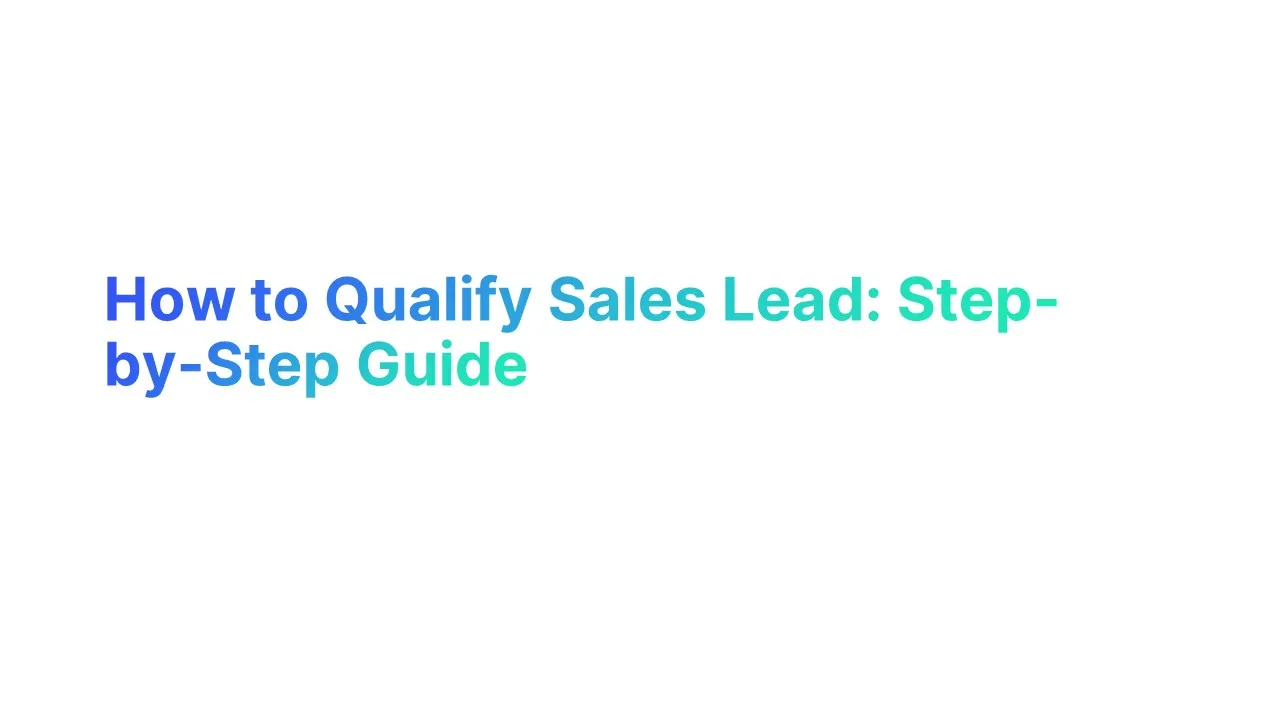Introduction to Qualifying Sales Leads

To effectively improve sales and maximize conversion rates, businesses must qualify sales leads precisely. Research shows that 67% of lost sales are due to improper lead qualification.
Companies using lead scoring see a 77% increase in lead generation ROI. By accurately qualifying sales leads, sales teams can prioritize high-potential prospects, streamline their efforts, and improve efficiency.
This process reduces wasted resources and enhances customer satisfaction, leading to sustained business growth.
Understanding and implementing advanced lead qualification strategies is crucial for staying competitive in today’s market.
What Does It Mean to Qualify Sales Leads?
To qualify sales lead means to evaluate potential customers to determine their likelihood of purchasing your product or service.
This involves assessing their needs, budget, authority, and buying readiness.
Qualifying a lead ensures that your sales team focuses on high-potential prospects, optimizing resources and improving conversion rates.
Importance of Sales Lead Qualification

The process of sales lead qualification is vital for several reasons, making lead qualification important for identifying ideal leads and improving overall sales efficiency:
1. Efficient Use of Resources
By qualifying sales leads, you ensure that your sales and marketing teams spend time and resources on prospects more likely to convert. This efficiency reduces wasted efforts and increases overall productivity.
2. Increased Conversion Rates
When you focus on qualified prospects, your conversion rates naturally improve. Qualified leads have already demonstrated interest and fit your ideal customer profile, making them more likely to purchase.
3. Better Understanding of Customer Needs
The qualification process involves gathering detailed information about prospects. This deeper understanding allows your team to tailor their approach, addressing specific pain points and needs, which enhances the likelihood of conversion.
4. Improved Forecasting and Planning
With a clear picture of which leads are more likely to convert, businesses can make more accurate sales forecasts and strategic plans. This foresight helps in setting realistic sales targets and allocating resources effectively.
5. Enhanced Sales and Marketing Alignment
Qualifying sales leads fosters better alignment between sales and marketing teams. Both teams can work more cohesively towards common goals when they agree on a qualified lead.
6. Cost Savings
Focusing on qualified leads reduces the cost per acquisition. Businesses can lower their marketing and sales expenses by not wasting efforts on unqualified leads, leading to a higher return on investment (ROI).
7. Enhanced Customer Experience
Qualified leads are likelier to interact positively with your sales team because the engagement is relevant and timely. This enhances the overall customer experience and builds long-term relationships.
What is a Qualified Sales Lead?

Understanding what makes a sales lead qualified is crucial for any business looking to optimize its sales process.
A qualified sales lead, often referred to as a sales qualified lead, is a prospect who has shown interest in your product or service and meets specific criteria that suggest a higher likelihood of conversion.
Let’s identify a qualified sales lead, incorporating techniques such as lead scoring, behavior analysis, direct engagement, research, and CRM tools.
How to Identify a Qualified Sales Lead

Identifying a qualified sales lead involves evaluating prospects based on various criteria. Here are key methods to ensure your leads are qualified and ready for the next step in the sales process.
Lead Scoring
Lead scoring is a systematic approach to ranking prospects based on their potential to become customers, often referred to as assigning a lead score.
This method assigns values to leads based on their behavior and interactions with your brand, such as website visits, email opens, and social media engagement.
Implementing a lead scoring model helps your sales team prioritize leads and focus on those with the highest potential.
Example: Imagine you’re a software company. A lead who downloads a white paper, attends a webinar, and requests a demo would score higher than one who only visited your website once.
Behavior Analysis
- Behavior analysis involves tracking and analyzing your prospects' actions to understand their interests and readiness to buy.
- This can include monitoring their interaction with your emails, website content, and social media posts.
- Example: A prospect who frequently visits your pricing page or engages with multiple blog posts about your product’s features is likely showing buying intent.
Direct Engagement
- Direct engagement with leads through emails, phone calls, or in-person meetings is another effective way to qualify them.
- Asking targeted questions during these interactions can help gauge their interest and determine their needs.
- Example: During an initial phone call, you might ask, "What challenges are you currently facing with your current solution?" This helps you understand their pain points and assess how well your product can address them.
Research and Insights
- Researching your prospects can provide valuable insights into their business needs, decision-making processes, and potential fit for your product.
- This might involve looking into their company size, industry, and recent news about their business.
- Example: If you’re targeting a tech startup, researching their latest funding round can give you clues about their budget and readiness to invest in new solutions.
CRM Tools
- Using Customer Relationship Management (CRM) tools can streamline the process of qualifying sales leads.
- These tools help you manage and analyze customer interactions and data throughout the lifecycle, ensuring no lead falls through the cracks.
- Example: A CRM tool can automatically categorize leads based on their behavior and engagement, providing your sales team with a clear view of which prospects are ready for follow-up.
Types Of Sales Leads

In the sales process, understanding the different types of sales leads is crucial for tailoring your approach and improving conversion rates.
Each lead type requires a unique strategy to qualify and nurture them effectively.
Cold Leads
- Cold leads are prospects who have shown little to no interest in your product or service. They might be aware of your brand, but they haven't engaged significantly.
- Qualifying cold leads often involves extensive nurturing to move them through the sales funnel.
- Example: Imagine you receive a contact list from a trade show. These contacts are cold leads until you initiate engagement through email or phone calls.
Warm Leads
- Warm leads are prospects who have shown interest in your offerings. They might have downloaded a resource from your website, subscribed to your newsletter, or engaged with your social media content.
- These leads require consistent follow-up to build a relationship and move them closer to making a purchase.
- Example: A prospect who signs up for a webinar is a warm lead. They are familiar with your brand and interested in learning more.
Hot Leads
- Hot leads are highly interested prospects ready to make a purchase decision soon.
- These leads have interacted extensively with your brand and demonstrated strong buying signals. Hot leads are the most valuable as they are close to conversion.
- Example: A prospect who requests a product demo or pricing information is a hot lead, indicating a high intent to purchase.
Marketing Qualified Leads (MQLs)
Marketing Qualified Leads (MQLs) are prospects who have been deemed ready for the sales team based on their engagement with marketing activities. These leads have shown enough interest and engagement to be passed from marketing to sales.
Example: A lead who has engaged with multiple content pieces, such as blog posts and whitepapers, and meets specific criteria set by the marketing team qualifies as an MQL.
Sales Qualified Leads (SQLs)
Sales Qualified Leads (SQLs) are MQLs that have been further evaluated by the sales team and are considered ready for direct sales engagement. SQLs typically have a clear need, authority to make decisions, and a timeline for purchasing.
Example: A lead that has had a successful discovery call with the sales team and meets the BANT (Budget, Authority, Need, Timing) criteria is considered an SQL.
Product Qualified Leads (PQLs)
- Product Qualified Leads (PQLs) are prospects who have used a free trial or freemium version of your product and shown signs of interest in becoming a paying customer.
- These leads have experienced the product firsthand and are likely to convert if they see value in it.
- Example: A user who regularly logs into a software-free trial and engages with premium features is called a PQL.
Service Qualified Leads
- Service Qualified Leads are existing customers interested in upgrading their service or purchasing additional services.
- These leads are valuable as they already have a relationship with your brand.
- Example: A customer using your basic service plan expresses interest in upgrading to a premium plan, making them a service-qualified lead.
Referral Leads
- Referral leads come from recommendations by existing customers or partners. These leads are highly valuable because they come with a built-in level of trust and credibility.
- It often converts at a higher rate due to the endorsement from a trusted source.
- Example: A current customer refers a colleague to your service, and this referred prospect reaches out to learn more.
Step-by-Step Guide to Qualify Leads

Qualifying sales leads is essential for ensuring your sales team focuses on the most promising prospects.
This guide will walk you through the steps to effectively qualify sales leads, improve your overall sales process, and increase conversion rates.
Step 1: Define Your Ideal Customer Profile (ICP)
Defining your Ideal Customer Profile (ICP) to qualify sales leads effectively. Your ICP should detail the characteristics of your best customers, including demographics, industry, company size, and pain points. This profile serves as a benchmark for evaluating potential leads.
Example: If your ideal customers are mid-sized tech companies, focus your lead qualification efforts on prospects that fit this profile.
Step 2: Implement a Lead Scoring System
Lead scoring is a critical tool in the qualification process. Assign scores to leads based on their behavior, engagement, and fit with your ICP. Higher scores indicate a higher likelihood of conversion.
Example: A lead who downloads multiple resources and requests a demo would receive a higher score than one who only visits your website once.
Step 3: Apply BANT Criteria
BANT (Budget, Authority, Need, Timing) is a widely used framework for qualifying leads. Assess each lead’s budget, decision-making authority, need for your product or service, and the timing of their purchase decision.
Example: During an initial call, ask questions like, “Do you have the budget allocated for this project?” to gauge their readiness.
Step 4: Conduct Initial Research
Research your leads to gather insights about their company, industry, and specific needs. Use online resources, social media, and news articles to comprehensively understand each lead.
Example: If a lead’s company recently received funding, they might be more inclined to invest in new solutions.
Step 5: Engage with Lead Qualification Questions
Directly engaging with leads through targeted questions can help determine their fit. Ask questions that reveal their pain points, challenges, and goals.
Example: “What challenges are you facing with your current solution?” This question helps identify their specific needs.
Step 6: Analyze Lead Behavior
Monitor and analyze lead behavior across your digital channels. Track their interactions with your emails, website, and social media to understand their level of interest.
Example: A lead who frequently visits your product pages and engages with your content is likely more interested in your offerings.
Step 7: Leverage CRM Tools
Customer Relationship Management (CRM) tools are invaluable for managing and qualifying leads. Use your CRM to track interactions, update lead scores, and automate follow-ups.
Example: Use your CRM to set follow-up email or call reminders based on lead activity.
Step 8: Collaborate with Marketing
Collaboration between sales and marketing teams is crucial for effective lead qualification. Ensure both teams are aligned on the criteria for qualified leads and share insights regularly.
Example: Hold weekly meetings to discuss lead quality and adjust strategies based on feedback from both teams.
Step 9: Regularly Review and Adjust Criteria
Regularly review and update your lead qualification criteria to reflect market and business goals changes. This ensures your process remains effective over time.
Example: If you notice a trend in successful conversions from a new industry, adjust your ICP and lead scoring criteria to target similar prospects.
Step 10: Provide Value Early On
Providing value to your leads early in the engagement process helps build trust and demonstrates your expertise. Share relevant content, offer free consultations, or provide product trials.
Example: Offer a free eBook that addresses common pain points in your industry, showing leads that you understand their challenges.
Step 11: Follow Up Promptly
Timely follow-up is crucial for keeping leads engaged. Respond quickly to inquiries and maintain regular communication to keep your leads warm.
Example: If a lead downloads a white paper, follow up within 24 hours with an email offering additional resources or a call to discuss their needs.
Characteristics of a Qualified Sales Lead

Understanding the characteristics of a qualified sales lead is essential for optimizing your sales efforts. A qualified lead is more likely to convert into a customer, making it crucial to identify and prioritize these leads.
Here, we’ll explore the key characteristics that define a qualified sales lead.
1. Fit with Ideal Customer Profile (ICP)
A qualified sales lead should align with your Ideal Customer Profile (ICP). This profile includes your best customers' demographic, firmographic, and behavioral traits.
Leads that match your ICP are more likely to benefit from your product or service and thus have a higher potential for conversion.
2. Clear Need for the Product or Service
A qualified lead has a clear need for your product or service. They recognize a problem or opportunity that your offering can address.
Identifying this need early in the qualification process helps in tailoring your sales pitch to meet their specific requirements.
3. Authority and Decision-Making Power
For a lead to be considered qualified, they must have the authority to make purchasing decisions or be closely connected to the decision-makers.
Understanding the lead’s position within their organization helps assess their ability to influence or make the final purchase decision.
4. Budget and Financial Capacity
A qualified sales lead should have the financial capacity to purchase your product or service.
During the qualification process, it’s important to determine whether the lead’s budget aligns with your pricing.
This helps avoid wasting time on leads that cannot afford your offering.
5. Timely Purchase Intent
Qualified leads typically have a timeline for making a purchase decision. They might have a project deadline, budget cycle, or a pressing need that requires a timely solution.
Understanding their timeline helps prioritize leads and align your sales efforts accordingly.
6. Engagement with Your Brand
A high level of engagement with your brand is a strong indicator of a qualified lead.
This includes interactions such as visiting your website, downloading resources, attending webinars, or engaging with your social media content. These behaviors show interest and intent.
7. Favorable Past Interactions
Leads with favorable past interactions, either with your sales team or through customer service, are more likely to be qualified.
Positive experiences build trust and make it easier to convert leads into customers.
10 Things to Keep in Mind to Qualify Sales Leads

Qualifying sales leads is a crucial step in the sales process. It ensures that your sales and marketing teams focus on prospects with the highest potential to convert into customers.
Here are twelve essential considerations to help you qualify sales leads effectively.
1. Understand Your Ideal Customer Profile (ICP)
Start by defining your Ideal Customer Profile (ICP). This profile outlines the key characteristics of your best customers, including demographics, industry, company size, and common pain points. Understanding your ICP helps you identify leads that are more likely to convert.
2. Use Clear Criteria and Frameworks
Establish clear criteria and lead qualification frameworks for qualifying leads. Using a lead qualification framework ensures consistency and efficiency in your lead qualification process.
3. Implement a Lead Scoring System
A lead scoring system assigns values to leads based on their behavior, engagement, and fit with your ICP. Higher scores indicate higher potential for conversion.
4. Conduct Thorough Research
Research your leads to gather insights into their company, industry, and specific needs. This helps tailor your approach and increases the chances of conversion.
5. Ask the Right Questions
During initial interactions, ask targeted questions that reveal a lead’s needs, challenges, and decision-making process. This helps determine their qualification status.
6. Monitor Lead Behavior
Track and analyze lead behavior across your digital channels. Actions such as visiting your website, engaging with emails, and interacting on social media indicate interest and readiness to buy.
7. Leverage Technology and Tools
Utilize technology and tools like Customer Relationship Management (CRM) systems to streamline your lead qualification process. These tools help track interactions, score leads, and automate follow-ups.
8. Align Sales and Marketing Efforts
Ensure that your sales and marketing teams are aligned on what constitutes a qualified lead. Regular communication and shared goals improve collaboration and efficiency.
9. Follow Up Promptly and Effectively
Timely follow-up is crucial for keeping leads engaged. Respond quickly to inquiries and maintain regular communication to nurture leads through the sales funnel.
10. Regularly Review and Adjust Processes
Continuously review and refine your lead qualification criteria and processes. This ensures that your approach remains effective as market conditions and business goals evolve.
Frameworks to Qualify Sales Lead

Qualifying sales leads is essential for maximizing your sales efforts and ensuring that your team focuses on the most promising prospects.
Several frameworks can help you systematically qualify sales leads. Here, we’ll explore four popular frameworks: BANT, CHAMP, GPCT, and FAINT.
1. BANT (Budget, Authority, Need, Timing)

The BANT framework is one of the most widely used methods to qualify sales leads. It helps you determine if a lead has the budget, authority, need, and timing to purchase your product or service.
- Budget: Assess whether the lead has the financial capacity to buy your product. Ask questions like, “What budget do you have allocated for this project?”
- Authority: Identify if the lead has the decision-making power or if they need approval from someone else. Ask, “Who else will be involved in this decision?”
- Need: Determine if the lead has a genuine need for your product. Ask, “What challenges are you facing that our product can solve?”
- Timing: Understand the lead’s timeline for making a purchase. Ask, “When do you plan to implement this solution?”
- Example: A tech startup looking for a new CRM system with an allocated budget, a decision-maker in place, an immediate need for better customer management, and a plan to implement within the next quarter would be a qualified lead under the BANT framework.
2. CHAMP (Challenges, Authority, Money, Prioritization)

The CHAMP framework focuses on understanding the lead’s challenges and priorities in addition to their authority and budget.
- Challenges: Identify the specific challenges the lead is facing. Ask, “What are the main pain points in your current process?”
- Authority: Confirm the lead’s decision-making power. Ask, “Who needs to approve this purchase?”
- Money: Ensure the lead has the budget. Ask, “What is your budget for this project?”
- Prioritization: Understand how high a priority this project is for the lead. Ask, “How critical is this need compared to other initiatives?”
- Example: A manufacturing company struggling with inventory management, with the necessary budget, a decision-maker ready to engage, and the project as a high priority would fit well within the CHAMP framework.
3. GPCT (Goals, Plans, Challenges, Timeline)

The GPCT framework is designed to understand the lead’s goals, plans to achieve those goals, challenges they face, and their timeline for implementation.
- Goals: Identify the lead’s objectives. Ask, “What goals are you trying to achieve?”
- Plans: Understand the plans they have in place to reach those goals. Ask, “What strategies are you using to achieve these goals?”
- Challenges: Recognize the obstacles they are encountering. Ask, “What challenges are preventing you from reaching your goals?”
- Timeline: Determine their timeline for achieving these goals. Ask, “What is your timeline for overcoming these challenges?”
- Example: A healthcare provider aiming to improve patient management, with a detailed plan, facing significant data management challenges, and a timeline to implement a solution within six months would be a good fit for the GPCT framework.
4. FAINT (Funds, Authority, Interest, Need, Timing)

The FAINT framework emphasizes financial capacity, authority, interest, need, and timing, making it suitable for qualifying leads who show interest but may not have an immediate buying intent.
- Funds: Confirm the lead’s financial ability. Ask, “Do you have the funds allocated for this project?”
- Authority: Ensure the lead can make purchasing decisions. Ask, “Who will be making the final decision?”
- Interest: Gauge the lead’s interest level. Ask, “How interested are you in finding a solution to this problem?”
- Need: Verify that there is a need for your product. Ask, “What specific needs do you have that our product can address?”
- Timing: Understand when they plan to make a purchase. Ask, “What is your timeframe for implementing a solution?”
- Example: An educational institution interested in new learning management software, with the budget, decision-making authority, a clear need, and a plan to implement within the academic year would align well with the FAINT framework.
Advanced Strategies to Qualify Sales Leads
Qualifying sales leads effectively requires advanced strategies that go beyond basic criteria. You can enhance your lead qualification process by implementing data-driven techniques and leveraging modern technology.
Here are eight advanced strategies to help you qualify sales leads more efficiently.
1. Data-Driven Lead Scoring
Lead scoring is a critical tool in the lead qualification process. Using data-driven lead scoring, you assign values to leads based on their interactions with your brand and fit with your ideal customer profile. This approach helps prioritize leads that are more likely to convert.
Use analytics to track lead behaviors such as website visits, content downloads, and email engagement, then assign scores based on these actions.
2. Behavioral Segmentation
Segmenting leads based on their behaviors allows you to tailor your qualification process more precisely. Behavioral segmentation involves grouping leads according to their actions, such as the type of content they engage with or the frequency of their interactions.
Create segments for leads who frequently engage with educational content versus those who interact primarily with product-focused content.
3. Enhanced Personalization
Personalizing your interactions with leads can significantly improve your qualification process. Use data to customize your communications, addressing specific needs and pain points identified during earlier interactions.
Send personalized emails that reference specific challenges a lead has mentioned or highlight features of your product that address their unique needs.
4. Multi-Channel Engagement
Engaging leads across multiple channels ensures a more comprehensive understanding of their interests and buying readiness. Utilize a combination of emails, social media, phone calls, and in-person meetings to gather information and qualify leads.
Follow up an email campaign with a personalized phone call to discuss the lead’s specific needs and answer any questions they might have.
5. Leverage Intent Data
Intent data provides insights into a lead’s purchasing intent based on their online behavior. By analyzing intent data, you can identify leads actively researching solutions and are more likely to be in the market to buy.
Use tools that track intent data to identify leads who have visited comparison sites or viewed pricing pages, indicating a higher likelihood of purchasing.
6. Artificial Intelligence and Machine Learning
Artificial intelligence (AI) and machine learning (ML) can enhance your lead qualification process by automating data analysis and predicting lead behavior. These technologies can help identify patterns and trends that human analysis might miss.
Implement AI-powered tools to analyze lead interactions and predict which leads will likely convert based on historical data.
Challenges And Solutions To Qualify Sales Lead
Qualifying sales leads effectively is essential for optimizing your sales process and ensuring your team focuses on the most promising prospects.
However, this process comes with several challenges. Here, we explore common challenges in qualifying sales leads and provide practical solutions.
1. Identifying the Right Leads
Challenge: Differentiating between high-quality and low-quality leads.
Solution: Use data-driven lead scoring to prioritize high-potential leads.
2. Gathering Accurate Information
Challenge: Obtaining complete and reliable data.
Solution: Implement CRM tools to collect and manage lead information efficiently.
3. Aligning Sales and Marketing Teams
Challenge: Ensuring both teams work towards common goals. Solution: Regular meetings and shared KPIs foster collaboration.
4. Understanding Lead Needs and Pain Points
Challenge: Identifying specific customer needs.
Solution: Conduct detailed research and ask targeted questions during interactions.
5. Qualifying Leads Quickly
Challenge: Speeding up the qualification process without compromising accuracy.
Solution: Automate initial screenings using AI-powered tools.
6. Dealing with Inconsistent Data
Challenge: Handling fragmented or outdated information.
Solution: Regularly update and verify lead data within your CRM.
7. Ensuring Follow-Up
Challenge: Maintaining consistent follow-up.
Solution: Set up automated follow-up sequences to stay engaged with leads.
8. Adaptability to Market Changes
Challenge: Adjusting strategies to evolving market conditions.
Solution: Regularly review and update lead qualification criteria.
Conclusion
To qualify sales leads it is crucial to optimize your sales efforts. You can efficiently identify high-potential leads by understanding the Ideal Customer Profile (ICP), using data-driven lead scoring, and employing frameworks like BANT and CHAMP.
Addressing challenges such as gathering accurate information, aligning sales and marketing teams, and managing high volumes of leads ensures a streamlined process.
Leveraging advanced strategies like behavioral segmentation, multi-channel engagement, and AI further enhances your lead qualification process.
Implement these strategies to qualify sales leads effectively and drive sales success.









